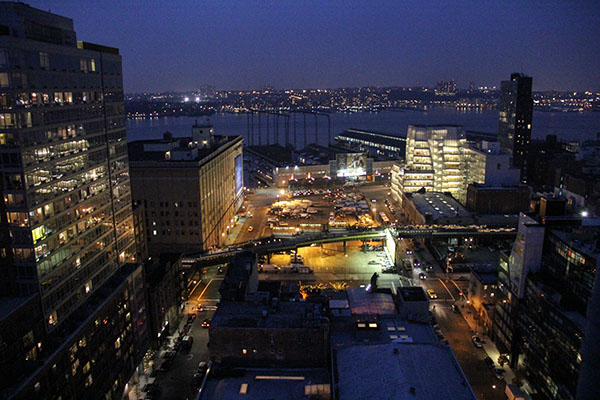
A single question comes up everywhere in Midtown West: Who gets to live here? The $15 billion Hudson Yards development project will turn a railroad storage area into a 26-acre complex of offices and residential skyscrapers, and that, in turn, will change the lives of the neighborhood’s residents. But that’s only the most visible project in a fast moving, continuously transforming Manhattan neighborhood.
From the Hudson River to Fifth Avenue, from 14th Street to 66th Street, Midtown Gazette reporters cover a wide range of stories – education, religion, real estate, business and economics, the arts, or simply daily life. No matter what the story, the dynamic is the same: Everything’s in flux, whether it’s the impact of Google’s new building on a little Puerto Rican restaurant a block away or West Clinton’s zoning grid.
Major transformation in the area started about 20 years ago, but the pace in Times Square, Chelsea, and the Garment and Theater Districts has picked up over the last few years. From the 1960’s until the early 1990’s, the Times Square area reaching from 42nd Street to 47th Street and spanning Broadway and Sixth Avenue, was a center of crime and prostitution; today, two- and three-star hotels overshadow the small, cheap hotels that used to dot the landscape.
And Hell’s Kitchen, between 59th Street and 34th Street and Eighth Avenue and the Hudson River, is becoming a trendy destination, but was once a poor working class neighborhood, one of the film locations for the musical “West Side Story.”
The neighborhood began to change when Rudy Giuliani, New York City’s mayor from 1994 until 2002, came into office, as Midtown West’s once poor and dangerous neighborhoods were slowly reshaped with an eye toward security and improved quality of life. With the construction of high-end buildings and the implementation of increased safety measures, the neighborhood began to change.
The onset of urban development in Midtown West also attracted wealthier residents looking for the next real estate frontier – and today, some of the most expensive residences in Manhattan are located in the area, including One57 Condominium Residences, which will be the tallest residential building in New York City.
But these rapid changes have made it harder for some of Midtown West’s residents to stay. “The dynamic works like this: One neighborhood becomes hot, so many businesses move there. After some time, prices are raised, it becomes too expensive, so they move away again,” said Aaron Gavios, the 53-year old Vice President and general Partner of Square Foot Realty, a retail listing firm in Hell’s Kitchen, who has lived in New York all his life. Long-time tenants – from public housing residents to exclusive art galleries – wonder how long they’ll be able to stay where they are. The Ali Forney Center, a homeless LGBT youth shelter in Chelsea, has already announced that it will relocate to Harlem because of rent increases over the last seven years.
No one’s immune to the effects of gentrification. Not even the physical landscape will stay the same – far beyond Hudson Yards, increased rents and sale prices, redrawn zoning lines, and ongoing architectural landmark debates guarantee only one thing, that Midtown West will not be the same place in five years that it is today. In this special edition, the Midtown Gazette staff takes a comprehensive look at what’s in play.
Here are the links to the other stories:
Renewed Attempts to Preserve “New York’s Temple of Power”
CB4 Launches Community Job Site
New Year Brings Changes for Library’s Main Branch
Will This Area Catholic School Be Saved?
Vulnerable Pets Find Helping Hands
Upscale Consignment Shops Sprout Up in Chelsea
Contributors include Kamakshi Ayyar, Anna Cooperberg, Qi Chen, Morgan Davis, Emmanuel Felton, Mei-Yu Liu, Ashwaq Masoodi, Gregory Moomjy, Stephanie Ott, N.G. Onuoha, David Palacio, Valerie Prassl, Simone Scully, Claire Stern and Annie Zak and Digital Media Fellow Carmel DeAmicis.